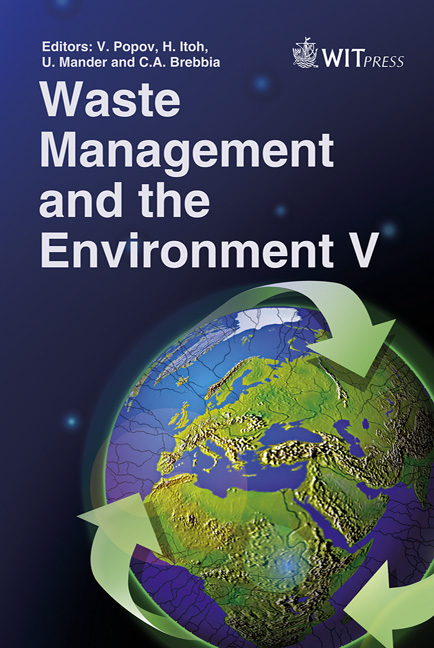An Integrated Approach To In-situ Remediation Of A Former Paint Manufacturing Facility
Price
Free (open access)
Transaction
Volume
140
Pages
7
Page Range
349 - 355
Published
2010
Size
825 kb
Paper DOI
10.2495/WM100311
Copyright
WIT Press
Author(s)
F. C. Ballesteros, L. F. DeSales & G. D. Pamintuan
Abstract
In the Philippines, there are neither regulations nor standards governing the remediation of contaminated sites. Using the United States Environmental Protection Agency (USEPA) Environmental Site Assessment (ESA) Procedure, ESA Phases 1 and 2 were conducted on a contaminated facility suspected of VOCs and TPH. Initial testing using auger drilling up to two (2) meters depth showed at least five (5) impacted areas. The 2.4-hectare property was then subjected to a 5m x 5m drilling grid in the 5 areas and test pitting. The following were found to have contributed to the contamination in the area: an underground storage tank which contained, among other compounds, acetone and esters; a drainage system emptying into a series of settling ponds; and another drainage system which was older but apparently was not part of the plant facility. Most of the subsurface contamination was in the clay layers which were of two kinds: a lighter brown type which was deposited from the nearby mountains, and a dark, organic matter-bearing clay, which has been deposited by an ancient river in the area. Contamination in the clays took the form of a plume which spread out from the storage tank and leakage of TPH from the drainage systems overprinted the plume. A layer of coarser sediments (sand- up to gravel-sized) at depths of 4 meters or more marked the deepest parts of the pit; behaviour of contaminant movement was not easy to follow in this stratum due to the high porosity/permeability. Tests included visual, olfactory, pH, PID and laboratory tests for VOCs and TPH; a correlation between the last two tests was done to lower cost of laboratory testing; water produced during the excavation was chemically treated using FeCl3 before discharging to a nearby creek. Bioremediation using white rot fungus, Phanerochaete chyrsosporium, was done
Keywords
composting, bioremediation, SVOC, developing country





